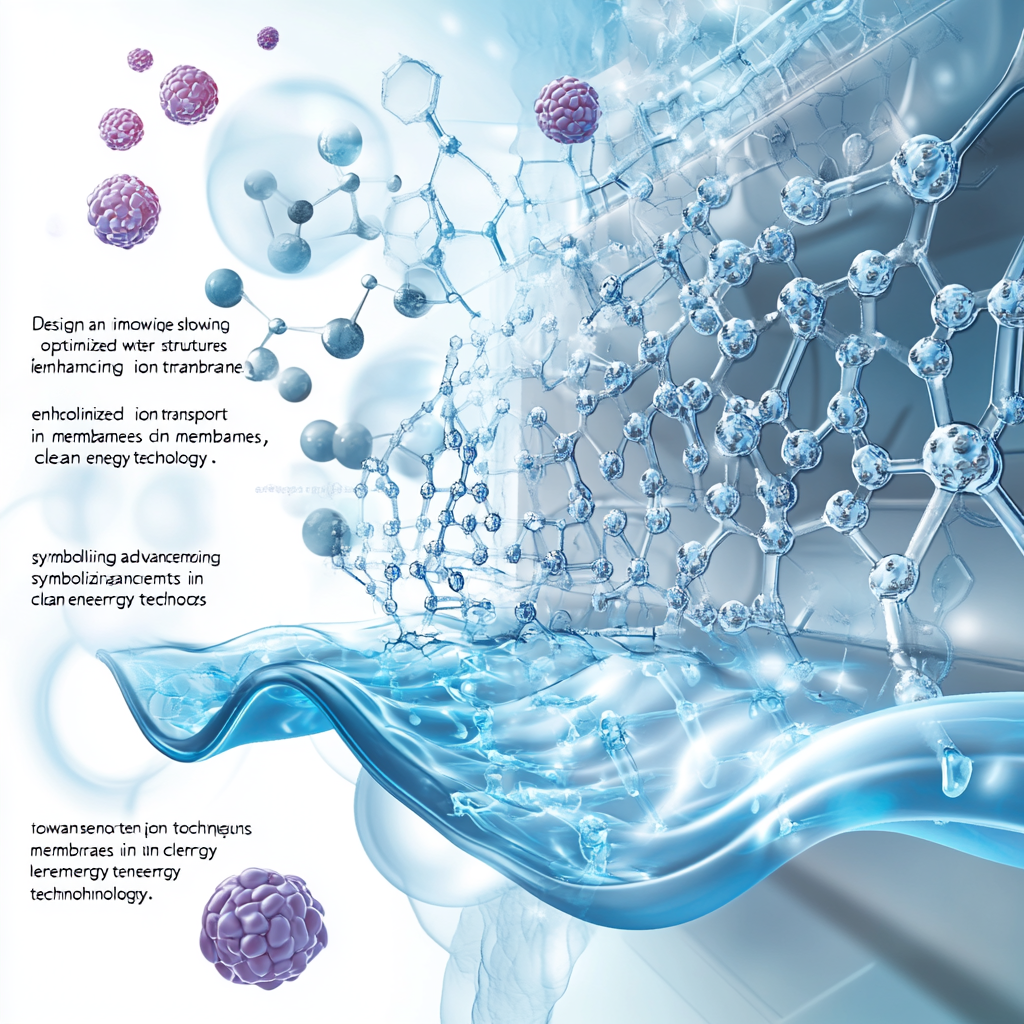
Why more water is not always better in ion-conducting membranes: New insights for clean energy technology
Why More Water Isn’t Always the Answer in Ion-Conducting Membranes: Insights for the Clean Energy Revolution
Let's put the kettle on and dive straight into the steaming world of ion-conducting membranes. These beauties are at the heart of clean energy technologies like fuel cells and redox flow batteries, smashing carbon emissions and promising a greener future. For ages, the rule of thumb has been that more water equals better performance for these membranes. But hold onto your hats; a new study has turned this assumption upside down, and it’s thrilling enough to spark your interest in clean energy alternatives.
The Old Wisdom: Water, Water, Everywhere
Picture this: for a long time, scientists, clad in their lab coats and armed with beakers, believed that an abundance of water is the holy grail necessary for ion transport in anion exchange membranes (AEMs). These membranes are like the unsung heroes of energy conversion, ushering charged ions across barriers and allowing us to convert chemical energy into electrical energy. Classic wisdom declared that the more freely flowing water you had, the better the performance of the membrane. But let me tell you—this old adage is being challenged!
The New Groove: Structure Takes the Lead
Reports from a crew of sharp-minded researchers at the University of Chicago's Pritzker School of Molecular Engineering and folks over at New York University are turning heads faster than a gossip column. Forget about chugging gallons of water to bulk up your membranes; the magic lies in the structure of water molecules—how they’re organized is what counts! The groundbreaking research recently published in Nature Communications tells us that ion transport can thrive spectacularly without saturating the membrane in water. Do you feel the excitement yet?
Optimizing the Water Game
So, what’s the secret sauce? Well, it turns out that the performance of AEMs can be maximized with just the right amount of water—enough to create well-connected networks of water molecules. This process includes forming a dynamic water shell around the ions, boosting the efficiency of ion transport like an energizer bunny on a supercharge. The formation of hydrogen-bonding networks among water molecules turns out to be the unsung hero we're looking for, facilitating that all-important movement of ions.
High-Tech Sleuthing: A Closer Look with Advanced Techniques
But wait—how did they uncover this juicy tidbit? Through some fancy footwork in the world of science! Researchers deployed cutting-edge tools like sophisticated two-dimensional infrared spectroscopy (2D IR) to take a closer look at the dance of water molecules on a molecular scale. These scientists didn't merely scratch the surface; they captured the fast-paced behavior of these molecules, revealing layers of complexity previously hidden to the naked eye. That's like unveiling the highest level of a video game that many thought was inaccessible!
The Ripple Effect for Clean Energy
What does all this mean for our planet and clean energy solutions? It’s seismic—by honing in on the optimal water structure for AEMs, we can create membranes that function effectively even in low-humidity settings. Imagine that! A withering drought doesn’t mean energy storage systems have to wither too. This advancement has the power to significantly boost the functionality and resilience of energy systems while also reducing their reliance on favorable humidity conditions.
The Broader Scientific Landscape
Take a moment and appreciate that this revelation extends beyond AEMs. It lays down a versatile framework for tackling molecular behavior's various headaches across different scientific realms—from biochemistry to materials science. With this integrated approach combining experimental techniques and molecular modeling, the potential for groundbreaking research is unlimited. It’s like giving scientists the keys to the universe!
Other Trailblazing Innovations
While our spotlight is on AEMs, let’s not overlook other rising stars in the world of ion-conducting membranes. Researchers from the Qingdao Institute of Bioenergy and Bioprocess Technology are strutting their stuff with innovative multilayered ceramic membranes for hydrogen production, utilizing a technique dubbed "Interface-reaction-induced reassembly." In layman's terms, this means creating dense and robust membranes perfect for solid oxide fuel cells and solid oxide electrolysis cells. Talk about excitement in the lab!
In Conclusion: Precision is Key
The new discoveries about ion-conducting membranes shine a light on the necessity for precision and optimization in material science. As we forge ahead on the quest for more efficient and sustainable energy solutions, understanding how water interacts with ions within these membranes will be pivotal. Think of it as mastering the delicate art of tea brewing, where every drop counts and every moment matters.
The future of clean energy is being sculpted by these fascinating revelations, and soaking in this knowledge is essential for anyone looking to make their mark on our planet’s sustainability.
Want to stay up to date with the latest news on neural networks and automation? Subscribe to our Telegram channel: @channel_neirotoken.
Embrace the challenge, explore the innovations, and let’s discover what awaits us in this bold new world of clean energy!

